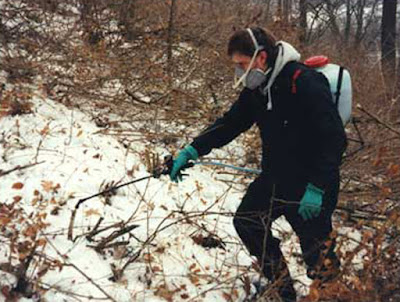Paul West returns to Pleasant Valley Conservancy
Yesterday we had a nice visit at Pleasant Valley Conservancy from Paul West, his family, and friends.
Paul played a major role in the early days of Pleasant Valley Conservancy, giving Kathie and me the key advice that we needed to get restoration work started properly. In those days, Paul was working only part-time at the Nature Conservancy, so that we could hire him for work and advice. He and his colleague Pat Schrader did some of the first savanna restoration work (Unit 12B). Paul also set up the protocols for control of brush (buckthorn, honeysuckle, prickly ash, etc.) and weeds (sweet clover, wild parsnip). He also wrote our first grant proposal (one of the first WHIP grants in Wisconsin). He set up the first major burn that was run by the Prairie Enthusiasts in April 1998. Finally, Paul encouraged Kathie to initiate a seed collecting program, which played such an important role in enhancing the biodiversity of the Conservancy.
Paul was soon hired full time by TNC and became heavily involved in Wisconsin's chapter Ecoregional Planning initiative. While continuing work at TNC, Paul continued graduate school at UW-Madison, and received his Ph.D. in 2010 (thesis title "Quantifying the effects of land use change on ecosystem services"). He is now the co-director and lead scientist for the Global Landscapes Initiative, a program within the Institute on the Environment at the University of Minnesota.
We were delighted to have Paul back to show him how the Conservancy has prospered as the result of his initial guidance.
 |
| Paul West and group being guided through restored oak savanna by Kathie Brock, June 27, 2015 |
 |
| Paul West spraying honeysuckle cut stems, Pleasant Valley Conservancy, 1999 |







